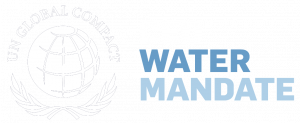This step helps ensure that enterprise water targets address water-related risks in the places that matter the most. This can be achieved through a number of actions.
Material issues are those that have a direct or indirect impact on an organization’s ability to create, preserve, or erode economic, environmental, and social value for itself, its stakeholders, and society at large (GRI 2020).
To determine if water is a material issue, companies should evaluate the impacts and dependencies on water resources across the value chain. Different sections of the value chain may have different impacts and dependencies. Examples are available on how water’s potential impacts and water dependency are distributed across a company’s value chain (McKinsey & Company, Inc. 2009; Nike Inc. 2015; SABMiller and WWF-UK 2009).
For each section of the value chain, a company can ask two questions to assess water materiality:
- Dependencies on water resources: to what extent is this section of the value chain likely to be affect- ed by water challenges because of its dependencies on water quantity or quality?
- Impacts on water resources: to what extent do the activities in this section of the value chain con- tribute to shared water challenges?
Water materiality will be high in those sections with high dependencies or impacts on water resources. Companies should prioritize those sections of the value chain when setting water targets. For example, a manufacturing plant may have limited dependency on water quality but a significant impact on the quality of the water body to which the plant discharges wastewater. Conversely, a food processing plant that returns more than 95 percent of its water withdrawals will have limited impact on local water availability but will have a very high dependency on water resources. In both cases, the company should prioritize setting targets at those locations.
Companies can estimate dependencies and impacts on water resources across a value chain using water withdrawals and water quality requirements as a proxy for water dependencies and water consumption and water pollution as a proxy for impacts. This can be done using reported values (e.g., from the company’s sites and its suppliers or customers) or estimated values (e.g., water footprint statistics or life cycle assessments of the company’s products and services) (Table 2).

A company should prioritize the sections of the value chain for which water is most material to set water targets. These targets should reduce risk and ultimately eliminate a company’s contributions to shared water challenges. The outcomes of this prioritization will vary by industry and hinge on how dependencies and impacts on water resources are distributed across the value chain (Table 3).

Assigning priorities to sections of the value chain may require an iterative process with internal consultation. For example, in consulting with internal stakeholders across business units and functions, a company may learn that certain supply chains require critical water inputs or that certain products have higher-than-expected impacts on water supplies or quality.
A company may want to set water targets more broadly, for all sections of the value chain, to help catalyze action by others to eliminate shared water challenges or contribute specific solutions to help drive more sustainable water management. However, it is best to prioritize sections of the value chain for which water is most material, and where impacts on water resources are greatest, first.
